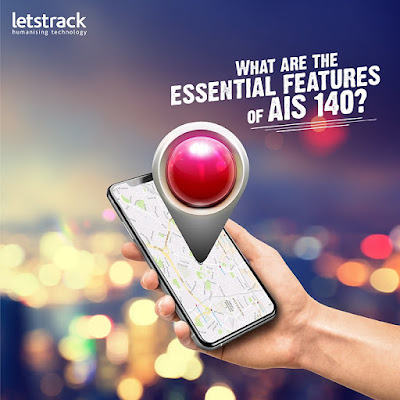The driver is the pilot of the vehicle. Whether the distance is short or long the way the driver drives the vehicles can make a difference of life and death for the people around, the driver himself and even the business. Driver behavior monitoring can help in many ways:
. Ensuring the safety of the vehicles
. Increasing the efficiency of the fleet
. Prolonged vehicle life
. Less accidents and repair expenses
. Planning future fleets and traffic management
. Road planning
AIS 140 have incorporated the monitoring of drivers behavior in the system as a must because of the above mentioned reasons. While the system cannot monitor what is going in the mind of the driver itself but with the modern age communication devices such as cloud and wireless monitoring other physical aspects of driving can be monitored and analyzed to comprehend and suggest the best driver behavior.
Automotive Industry Standard 140 (AIS 140 standard) for drivers performance monitoring clearly states that every vehicle should have drivers scorecard and reporting under the operations management guidelines for both intra city and intercity vehicles. Under the safety regulations it also mandates that there will be no display systems and as such in the driver's or the attendant's cabin and view area which can distract the drivers in all vehicles. These points include :
a) Speed violation
b) Driver duty performance
c) Driver wise improper stopping
d) Details of missed trip
e) Distance travelled by the vehicle
f) Average speed
g) Accident analysis
The drivers are not only responsible for just driving the vehicle from one place to another it also includes taking full responsibility for the vehicle. AIS 140 standard incorporates frameworks to screen the vehicle wellbeing on the web which can support the driver take immediate and corrective measures which reduce the off route time for the vehicle.
The driver behavior modeling has three main aspects: sensing, application and future systems. There are three main categories of driver behavior :
Normal behavior: This is when the drivers behave normally and divers with the optimal condition. Follows all the traffic rules, keeps a control on the speed of the vehicle, drives in lanes and is alert at all times.
Drunken behavior: driving under the influence of intoxication of alcohol and drugs can be identified with a set of characteristic behavior such as sudden acceleration, no lane driving, no control on speed, closed eyes for about 80% of time and slow reflexes.
Fatigue Behavior: Long working hours and other pressures can cause the driver to fatigue. This can lead to loss in effective driving. A fatigued driver has the same habits as that of a drunk driver but there is not alcohol in driver blood but just lack of sleep and rest.
The main aim of AIS 140 standards including driver behavior in its system is to ensure that the roads are safe for everyone at all times using intelligent transportation systems. Having a set model of driver conduct examination under AIS 140 principles will empower the country to predict and recognize driver preferences to provide better adaptive assistance.
Source: https://www.sooperarticles.com/communications-articles/gps-articles/ais-140-standards-helps-driver-behavior-1726822.html

No comments:
Post a Comment